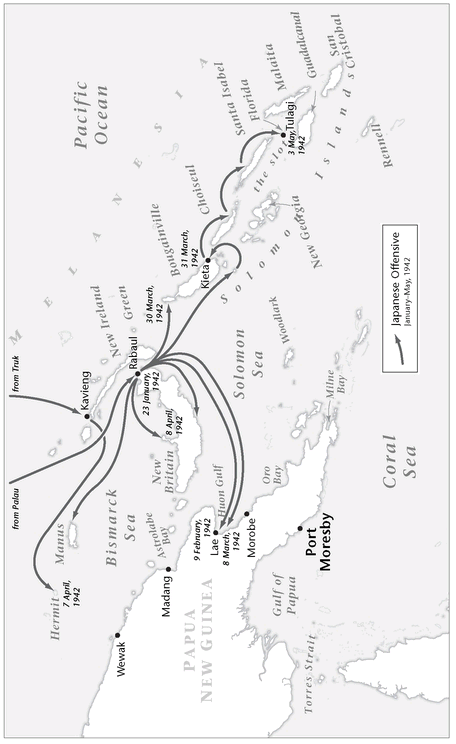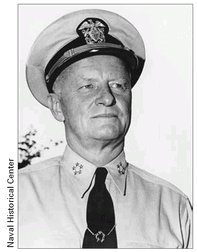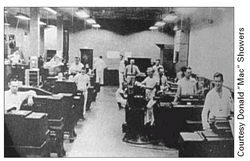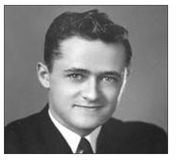War Stories II (20 page)
Authors: Oliver L. North

Until the American B-25s struck their homeland, the generals and admirals of the Imperial military were uncertain as to where they would go next. Their advance through the western Pacific had taken less than half the time they had expected, and had cost them fewer than 5,000 casualties, fewer than 100 aircraft, and the loss of only one shipâa destroyer at Wake Island.
For most of March, the emperor's military staff wrangled over three competing strategies: attacking west against India and Ceylon (now Sri Lanka), pressing south against Australia, or moving east against Hawaii.

Yamamoto, believing that it was essential to destroy the U.S. Navy in a decisive battle, advocated an eastern offensive: seizing Midway and the Aleutians and, if the Americans didn't sue for peace, moving against Hawaii to precipitate an engagement that would eliminate the U.S. fleet once and for all. The Japanese naval general staff argued for attacking south to Australia, while the Imperial Army staffâalready engaged in China, Burma, and the Philippinesâopposed all three.
While the debate was being waged, Yamamoto dispatched Admiral Chuichi Nagumo's carriers west, into the Bay of Bengal, the Arabian Sea, and the Indian Ocean. Between 31 March and 9 April 1942, the “hero of Pearl Harbor” had raided the British bases on Ceylon, struck Royal Navy supply bases on India's east coast, sunk six British warshipsâincluding the carrier HMS
Hermes
and the heavy cruisers
Dorsetshire
and
Cornwall
âand virtually swept the Indian Ocean clean of British merchant vessels.
Hermes
and the heavy cruisers
Dorsetshire
and
Cornwall
âand virtually swept the Indian Ocean clean of British merchant vessels.
Â
Admiral Chester Nimitz

Instead of choosing one of the competing southern, western, or eastern strategic alternatives for their next step, flushed with the thrill of easy victories and filled with confidence, the warlords in Tokyo decided to pursue all three. That was the plan. Then Doolittle's raid changed everything.
In Hawaii, there was desperation but no indecision. Twenty-four days after the attack on Pearl Harbor, a tall, cool Texan, Chester W. Nimitz, had replaced Admiral Husband Kimmel as the commander of the Pacific Fleet. Nimitz had turned down the assignment a year earlier, telling friends, “I am so much junior to so many of the admirals, and if I take it, that will make me so many enemies.”
But with the country at war, Nimitz set his personal concerns aside. On 31 December 1941, aboard the submarine USS
Grayling,
fifty-six-year-old Chester Nimitz had added his fourth star and taken command of a badly
damaged U.S. Pacific Fleet with FDR's orders still in his head:
“Report to the Pacific and stay there until the war is won.”
Grayling,
fifty-six-year-old Chester Nimitz had added his fourth star and taken command of a badly
damaged U.S. Pacific Fleet with FDR's orders still in his head:
“Report to the Pacific and stay there until the war is won.”
The man who would become Yamamoto's nemesis was a long way from the hill country of Fredericksburg, Texas, where he had grown up in a tightly knit German-American community, raised by his mother, Anna, and grandfather, Charles. His father and namesake had died before he was born. As a young man he learned tolerance and forgiveness of mistakes. These qualities came out of personal experience. Nimitz had run his first ship, the destroyer USS
Decatur
, hard aground. At his court-martial he was reprimanded for “neglect of duty.” He would later say, “Every dog deserves two bites.” This colloquial and practical philosophy served him well as he sought to rebuild the shattered morale and demolished ships at Pearl Harbor.
Decatur
, hard aground. At his court-martial he was reprimanded for “neglect of duty.” He would later say, “Every dog deserves two bites.” This colloquial and practical philosophy served him well as he sought to rebuild the shattered morale and demolished ships at Pearl Harbor.
The arrival of the
Yorktown
from the Atlantic shortly after the Pearl Harbor attack had brought U.S. carrier strength in the Pacific up to fourâbut on 11 January a Japanese sub torpedoed the
Saratoga
just 500 miles from Oahu. She would be out of the fight for five months. With only three carriers in operation, about the best Nimitz could manage during February and March were the fast carrier strikes by Halsey's
Enterprise
, by Admiral Wilson Brown's USS
Lexington
, and by Jack Fletcher's
Yorktown
.
Yorktown
from the Atlantic shortly after the Pearl Harbor attack had brought U.S. carrier strength in the Pacific up to fourâbut on 11 January a Japanese sub torpedoed the
Saratoga
just 500 miles from Oahu. She would be out of the fight for five months. With only three carriers in operation, about the best Nimitz could manage during February and March were the fast carrier strikes by Halsey's
Enterprise
, by Admiral Wilson Brown's USS
Lexington
, and by Jack Fletcher's
Yorktown
.
These “hit and run” strikes, though incapable of stopping the Japanese advance into New Guinea and the Solomon Islands, reinforced Yamamoto's belief that the American carriers based in Hawaii had to be sent to the bottom. But before he could attack Hawaii, Midway would have to be taken. To that end, Yamamoto urged military planners in Tokyo to expedite operations in New Guinea, complete the construction of a major fleet anchorage at Rabaul, and complete the isolation of Australia. On 10 April, the general staff in Tokyo approved his plan, although they refused to fix a date for the seizure of Midway until the lifeline to Australia could be cut off from the U.S. mainland.
But Doolittle's raid threw them off their stride. Tokyo responded by accelerating its timetable. An invasion fleet and covering force were ordered to assemble immediately at Rabaul on the north coast of New Britain. The carriers
Shokaku
and
Zuikaku
were stripped from Admiral Nagumo and
dispatched along with the light carrier
Shoho
to support the capture of Port Moresby, New Guinea, from which Japanese bombers could strike Darwin and Australia's Northern Territory. The war planners also decided to seize Tulagi, an island in the Solomon chain north of Guadalcanal, for use as an air and seaplane base. As soon as the invasion forces were safely ashore, the Japanese carriers would detach and assemble at a point in the central Pacific for the attack on Midway.
Shokaku
and
Zuikaku
were stripped from Admiral Nagumo and
dispatched along with the light carrier
Shoho
to support the capture of Port Moresby, New Guinea, from which Japanese bombers could strike Darwin and Australia's Northern Territory. The war planners also decided to seize Tulagi, an island in the Solomon chain north of Guadalcanal, for use as an air and seaplane base. As soon as the invasion forces were safely ashore, the Japanese carriers would detach and assemble at a point in the central Pacific for the attack on Midway.
All these changes to the Japanese operations plans required that they fill the airwaves with hundreds of encrypted radio messages. But Imperial radio operators weren't the only ones listening.
Â
Station Hypo

Back in Pearl Harbor, inside a windowless vault called Station Hypo, U.S. Navy signals specialists carefully recorded each of the Imperial Fleet's encoded radio broadcastsâand then painstakingly decrypted them. The little-known facilityâconnected to arrays of antennas in northern Australia, on Midway, and around the Hawaiian Islandsâwas the creation of U.S. Navy Lt. Commander Joseph Rochefort, an eccentric forty-three-year-old mathematician who had spent several happy years with his family in Japan before the war, becoming fluent in Japanese. He and his little team of code-breakers had been intercepting and unscrambling Japanese message traffic since before Pearl Harbor. And because he had missed the cable ordering the attack on 7 December, he had fully expected to be fired along with Admiral Kimmel. But Nimitz, recognizing the man's brilliance, and playing on his sense of duty, askedânot orderedâhim to stay on.
The appeal to Rochefort's patriotism had the effect Nimitz intended, and the team the code-breaker had built remained essentially intact. Then, after providing additional personnel necessary to do the job, Nimitz changed the guidelines on the dissemination of Station Hypo's intercepts. Wary of leaks and keenly aware that politicians were looking over his shoulder, the
admiral instructed Rochefort to stem the flow of information back to Washington. Instead, the decoded messages would first be given directly to him as the commander in chief of the Pacific Fleet, and Nimitz would determine which, if any, should be forwarded to Washington.
admiral instructed Rochefort to stem the flow of information back to Washington. Instead, the decoded messages would first be given directly to him as the commander in chief of the Pacific Fleet, and Nimitz would determine which, if any, should be forwarded to Washington.
With additional personnel aboard, the rate at which intercepted Japanese messages could be decrypted improved dramatically. About the time that Doolittle was preparing for his raid on Tokyo, Rochefort, one of his Station Hypo colleagues, Navy Lt. Commander T. H. Dyer, and Commander Edwin Layton, Nimitz's intelligence chief, succeeded in breaking the Imperial Navy's JN-25 code. The Japanese fleet used this code to transmit thousands of messages daily. Station Hypo had been working with some 45,000 code groups, trying to translate them from Japanese into English. They considered themselves fortunate if they could recover 10 or 15 percent of a message. But sometimes that was enough.
By April 1942 Admiral Nimitz was getting solid intelligence from his Station Hypo code-breakersâhe knew of Japanese ship movements even before many of Yamamoto's own ships' captains. In fact, some of the Japanese skippers never got the information themselves, a problem that plagued them throughout the war.
Among the team of bright young specialists that joined Station Hypo after Pearl Harbor was a farm boy from Iowa. Newly commissioned as an ensign, Mac Showers was ordered to Hawaii. He was told that his assignment was too sensitive to discuss with anyone.

ENSIGN MAC SHOWERS, USN
PAC Fleet Signals Intelligence Center
Station Hypo
Pearl Harbor, Hawaii
20 April 1942
PAC Fleet Signals Intelligence Center
Station Hypo
Pearl Harbor, Hawaii
20 April 1942

I arrived at Hypo in February 1942. I was an ensign and was told that I was being assigned to an intelligence unit that was working for the Pacific
Fleet. I went to the Navy yard and reported to Commander J. J. Rochefort. His office was in a basement that was relatively cold and damp, and people had to wear extra clothing in order to work comfortably down there. When I first saw Commander Rochefort, he was wearing a maroon smoking jacket and bedroom slippers. I was not particularly surprised. I figured a commander could do pretty much anything he wanted to. And it was uncomfortably cold. But I noticed that when he left, he didn't wear those outside. He was in his proper uniform.
Fleet. I went to the Navy yard and reported to Commander J. J. Rochefort. His office was in a basement that was relatively cold and damp, and people had to wear extra clothing in order to work comfortably down there. When I first saw Commander Rochefort, he was wearing a maroon smoking jacket and bedroom slippers. I was not particularly surprised. I figured a commander could do pretty much anything he wanted to. And it was uncomfortably cold. But I noticed that when he left, he didn't wear those outside. He was in his proper uniform.
Rochefort had a very strong feeling that at the beginning of the war he had failed his commander in chief by not giving him warning of the Japanese attack on Pearl Harbor. We now know there's no way he could have known about it, because it was executed in total radio silence, but Rochefort took it personally. This gave Rochefort a dedication to his task, which he passed on to his people.
The Japanese diplomatic service used a coding machine, which we replicated even before the war, allowing us to read their coded diplomatic traffic. But the Japanese navy didn't use that equipment. The Japanese military high command and their operating forces all used manual codes, which had to be encoded and decoded by hand using codebooks the size of an encyclopedia. For example, when they reported the sinking of their aircraft carriers, they had to go to the codebook and pick out a code group that represented the
Kaga
, and another one that represented the
Akagi
, and another one that represented the
Iru
, and then send their message by encoding that manually. And the recipient then had to decode it manually from an identical encyclopedic book, with all the code groups listed. That was the code system the Japanese navy used throughout the war. It was a laborious task.
Kaga
, and another one that represented the
Akagi
, and another one that represented the
Iru
, and then send their message by encoding that manually. And the recipient then had to decode it manually from an identical encyclopedic book, with all the code groups listed. That was the code system the Japanese navy used throughout the war. It was a laborious task.
Commander Edwin Layton was a good friend of Rochefort's. They had known each other a long time and had studied the Japanese language together in Japan for three years. Layton was somewhat more flamboyant, but more forceful. The two worked very closely together and trusted each other. Layton was a very persuasive individual and the perfect man to be Admiral Nimitz's intelligence officer.
Station Hypo set out to break the Japanese naval code, from thousands of messages transmitted every day in Morse signal. It was copied by intercept operators who tuned in on the frequencies that the Japanese were using. They had typewriters with Japanese characters. After those messages were copied, they would be sent down to our processing unit.
That was the name of the game: recover a “string” of code groups so that we could figure out the sense of the message from the code groups we had already broken. Little by little we were able to fill in the blanks and recover more words. This all came from a codebook that had thousands and thousands of code groups, each one meaning something, the name of a ship, the name of a person, the number or position, a place.
Rochefort would sit there in the basement producing this information, and give it to Layton, who would look it over, digest it, ask questions about it until he understood it. And then he would pass it to Admiral Nimitz.
By April 1942, we were able to read enough of the Japanese naval traffic to realize that they were preparing to mount a major operation in the South Pacific. It would put them within flying distance of Australia. We figured out enough about this operation to tell Admiral Nimitz what they were planning to do and when they planned to do it.
Other books
Ween's Chocolate and Cheese (33 1/3) by Shteamer, Hank
Picture Her Bound-epub by Sidney Bristol
Summerfield by Katie Miller
Eli by Bill Myers
Chart Throb by Elton, Ben
Wind Rider by Mason, Connie
Opening Moves by James Traynor
Eye for an Eye by Frank Muir
Stone Age by ML Banner
Lemon Sherbet and Dolly Blue by Knight, Lynn